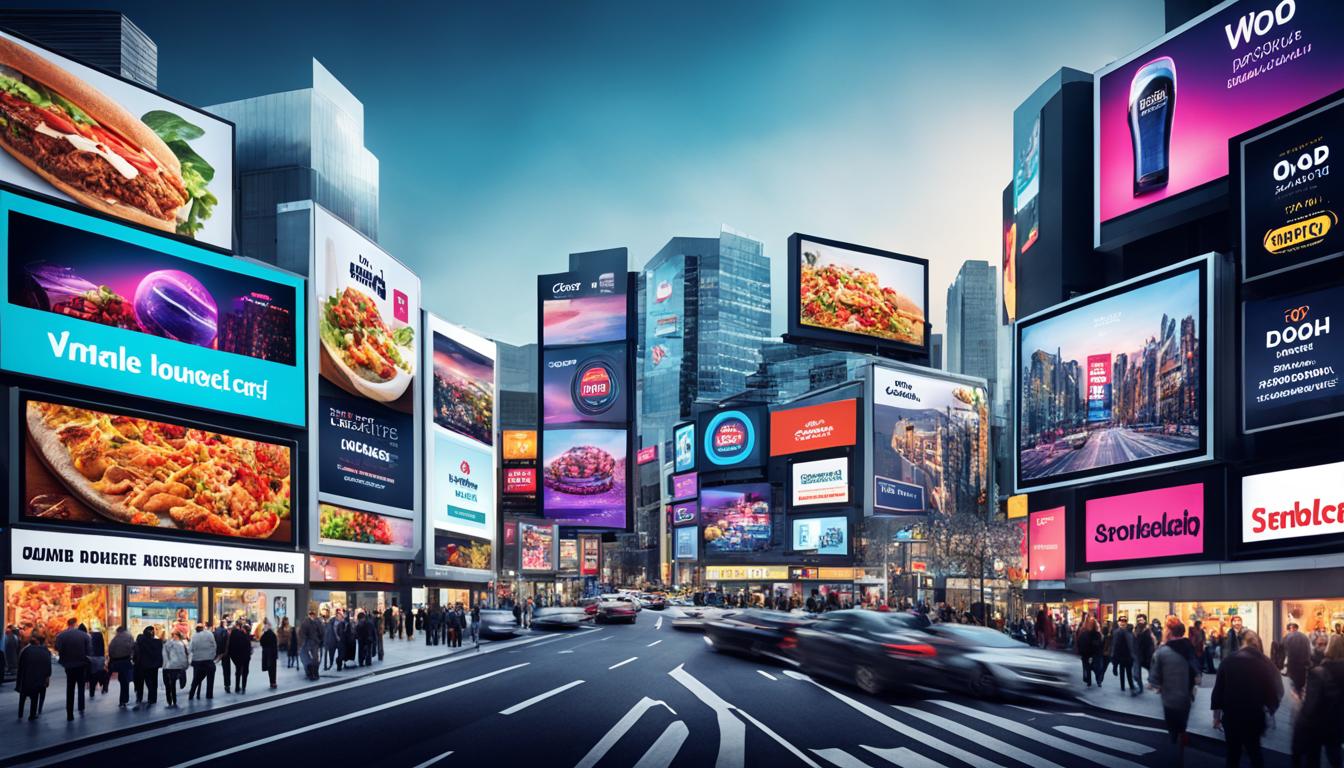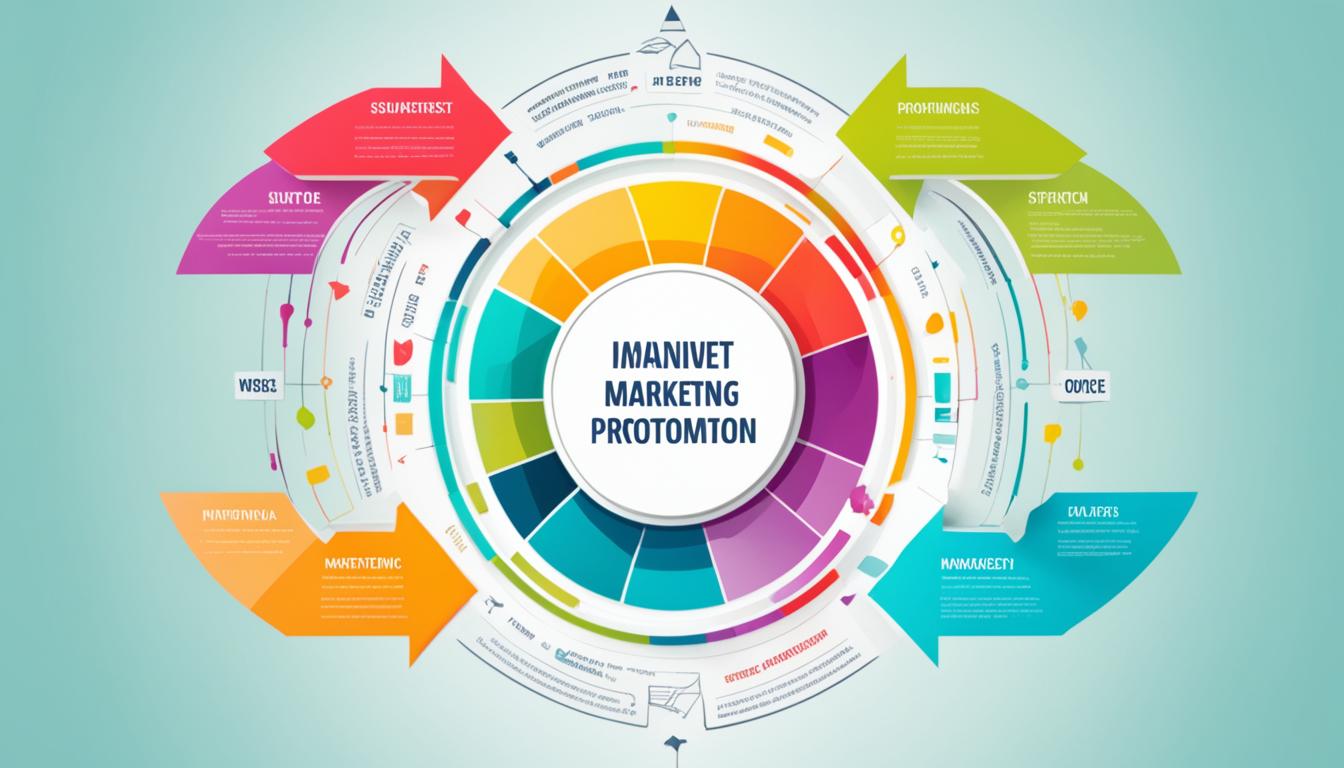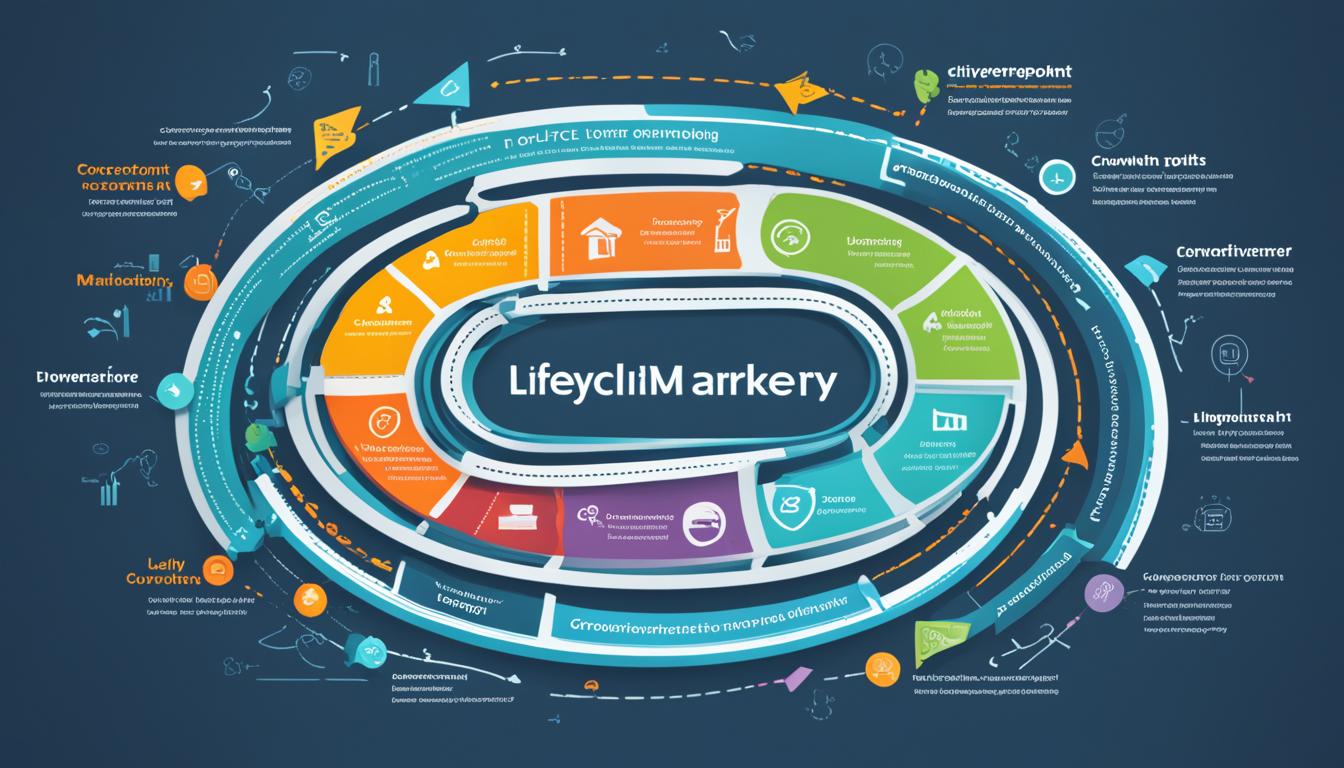Tata Motors is a well-known brand in India and globally, renowned for its automobiles and innovative marketing strategies. In this case study, we will delve into Tata Motors’ marketing strategy and explore how it has propelled the company to success in an increasingly competitive market.
With a strong emphasis on branding, digital marketing, and customer engagement, Tata Motors has cemented its position as a market leader. The company’s strategic approach to reaching new customers and expanding into new markets has set a benchmark for others to follow.
Through meticulous planning and execution, Tata Motors has effectively leveraged digital platforms such as social media and search engine optimization (SEO) to connect with its target audience. By engaging in pay-per-click (PPC) advertising, content marketing, and email marketing, the company ensures a seamless customer journey while providing informative and engaging content.
Tata Motors understands the significance of customer segmentation and has tailored its marketing efforts accordingly. By identifying the preferences and needs of various customer segments, the company develops and markets its cars to appeal to specific demographics.
Furthermore, Tata Motors has laid out a comprehensive social media marketing plan to increase brand awareness and foster customer engagement. Through collaborations with influencers, running impactful campaigns, and utilizing platforms like Facebook, Instagram, and Twitter, Tata Motors ensures that its message reaches a wider audience.
The marketing mix of Tata Group, which Tata Motors is a part of, encompasses product strategy, pricing strategy, place and distribution strategy, and promotional and advertising strategies. This conglomerate operates in various sectors, including automobiles, information technology, telecom, steel, consumer and retail, financial services, and infrastructure. Each subsidiary follows its own pricing strategy, and the group ensures a strong online presence through its websites and online platforms.
As Tata Group faces competition from other multinational conglomerates across different sectors, it remains steadfast in its commitment to building a strong brand portfolio and countering the competition effectively.
One notable brand under Tata Motors’ umbrella is Tata.ev, the electric vehicle brand. Rooted in sustainability and imbued with a vision for a cleaner future, Tata.ev aims to revolutionize the conversation around mobility. Through their commitment to eco-sensitivity and community engagement, Tata.ev creates a retail experience that goes beyond showcasing cars.
In conclusion, Tata Motors’ marketing strategy has played a pivotal role in establishing its brand reputation and market positioning. Through innovative strategies, targeted customer engagement, and a commitment to sustainability, Tata Motors continues to excel in a competitive market and is well-positioned for future success.
Key Takeaways:
- Tata Motors’ marketing strategy encompasses branding, digital marketing, and customer engagement.
- Customer segmentation plays a vital role in Tata Motors’ approach to developing and marketing their cars.
- Tata Motors leverages social media platforms and influencer collaborations to increase brand awareness and engage with their target audience.
- Tata Group, of which Tata Motors is a part, follows a comprehensive marketing mix strategy across various sectors.
- Tata.ev, Tata Motors’ electric vehicle brand, showcases their commitment to sustainability and innovation.
About Tata Motors
Tata Motors, a renowned automobile manufacturer, has firmly established itself as one of India’s largest automotive companies with a remarkable global reach. Their diverse range of vehicles has garnered widespread recognition and contributed to their stronghold in the industry. Tata Motors owes its success to a robust marketing strategy and an unwavering commitment to delivering superior products and services to its valued customers.
Operating as a prominent player in the automotive market, Tata Motors has an extensive portfolio of vehicles that caters to a wide spectrum of customer needs. From compact cars to SUVs, their offerings span across various categories and have garnered acclaim for their reliability, innovation, and affordability.
| Key Highlights: |
|---|
| Tata Motors is recognized as one of the largest automobile manufacturers in India. |
| They have a strong presence both domestically and internationally, exemplifying their global reach. |
| The company prides itself on a diverse product range, catering to different customer segments. |
| With a reputation for reliability, innovation, and affordability, Tata Motors has become a trusted brand in the automotive industry. |
Digital Marketing Strategies of Tata Motors
Tata Motors understands the importance of leveraging digital marketing to promote their products and reach new customers. By utilizing various strategies, they maintain a strong online presence and engage with their target audience effectively.
1. Social Media Marketing
One of Tata Motors’ primary digital marketing strategies is social media marketing. They harness the power of platforms like Facebook, Instagram, and Twitter to showcase their vehicles, connect with customers, and run engaging campaigns. Through compelling visuals, informative content, and interactive features, Tata Motors captures the attention of their target audience and cultivates brand loyalty.
2. Search Engine Optimization (SEO)
Tata Motors recognizes the significance of search engine optimization (SEO) in enhancing their online visibility. By optimizing their website content and structure, they ensure that their brand ranks higher in relevant search engine results. Employing effective SEO techniques allows Tata Motors to increase organic traffic, attract potential customers, and build credibility among online audiences.
3. Pay-per-click Advertising (PPC)
To target specific customer segments and maximize reach, Tata Motors utilizes pay-per-click (PPC) advertising. This form of digital advertising enables the company to display targeted ads to potential customers who are actively searching for vehicles or related information. By selecting relevant keywords and creating compelling ad copies, Tata Motors increases the chances of converting potential customers into leads or sales.
4. Content Marketing and Email Marketing
Tata Motors employs content marketing and email marketing as integral components of their digital marketing strategy. Through informative blog articles, videos, and other engaging content, they aim to educate their audience, build trust, and position themselves as industry experts. Additionally, email marketing allows Tata Motors to nurture relationships with their customers, provide personalized offers, and keep them updated with the latest products, promotions, and news.
Overall, Tata Motors’ digital marketing strategies encompass social media marketing, search engine optimization, pay-per-click advertising, content marketing, and email marketing. These efforts solidify their brand presence, facilitate customer engagement, and ultimately drive sales in a competitive digital landscape.
Tata Motors India’s Target Audience
Tata Motors recognizes the significance of understanding their target audience to effectively market their cars. By gaining insights into the needs and preferences of their customers, Tata Motors can develop and market vehicles that cater to specific customer segments. The diverse range of cars offered by Tata Motors attracts a broad customer base.
When it comes to affordable cars, Tata Motors appeals to young people who are seeking reliable and budget-friendly transportation options. The brand’s commitment to producing high-quality vehicles at competitive prices resonates with this target audience.
On the other end of the spectrum, Tata Motors also caters to affluent individuals and families who desire luxury and sophistication. Their luxury SUVs, designed with superior craftsmanship and innovative features, capture the attention of this discerning customer segment.
Understanding the target audience allows Tata Motors to develop tailored marketing campaigns, create vehicles that address specific needs, and position themselves as a brand that speaks directly to their customers. By focusing on customer segmentation, Tata Motors can effectively reach and engage with their target audience, fostering a strong connection that goes beyond a transactional relationship.
Target Audience Segmentation
Let’s take a closer look at how Tata Motors segments their target audience:
| Target Segment | Characteristics |
|---|---|
| Youthful and Budget-Conscious | – Value affordability and reliability – Seek fuel-efficient and compact cars – Interested in the latest technologies and connectivity features |
| Luxury Seekers | – Affluent individuals and families – Desire premium features and superior performance – Appreciate elegance and distinction in design |
By tailoring their marketing efforts and product offerings to these distinct customer segments, Tata Motors maximizes their reach and relevance in the automotive market.
The Social Media Marketing Plan for Tata Motors
Tata Motors understands the significance of social media in today’s digital landscape. With a comprehensive social media marketing plan, they aim to enhance brand awareness and engage with their target audience effectively. By utilizing popular platforms such as Facebook, Instagram, and Twitter, Tata Motors showcases their cars, runs impactful campaigns, collaborates with influencers, and expands their reach to a wider audience.
The social media marketing plan of Tata Motors consists of the following key components:
1. Building Brand Awareness:
Through strategic social media initiatives, Tata Motors focuses on developing a strong brand presence online. They leverage these platforms to share compelling content, including captivating visuals, informative videos, and engaging stories. By showcasing their products and highlighting their unique selling propositions, Tata Motors increases brand visibility and establishes themselves as a leading automotive brand.
2. Engaging with the Target Audience:
Tata Motors understands the value of customer engagement in building lasting relationships. They actively interact with their target audience on social media by responding to comments, addressing queries, and acknowledging feedback. By creating a two-way communication channel, Tata Motors ensures that their customers feel heard and valued, leading to higher levels of customer satisfaction and loyalty.
3. Running Effective Social Media Campaigns:
Tata Motors designs and executes well-crafted social media campaigns to generate buzz and create a positive impact. These campaigns are strategically planned to align with specific marketing objectives, such as product launches or seasonal promotions. By leveraging the power of social media, Tata Motors effectively reaches their target audience and drives engagement, ultimately resulting in increased brand awareness and sales.
4. Collaborating with Influencers:
Influencer marketing plays a significant role in Tata Motors’ social media strategy. They collaborate with influential individuals in the automotive industry who have a substantial following on social media platforms. These influencers promote Tata Motors’ vehicles to their audience, creating brand awareness and generating interest among potential customers. This partnership helps Tata Motors tap into new markets and reach a wider demographic.
The social media marketing plan of Tata Motors is meticulously designed to create brand awareness, foster customer engagement, and drive sales. By leveraging the power of social media, Tata Motors stays relevant in the competitive automotive industry and strengthens their position as a leading global brand.
Tata Group’s Marketing Mix
The marketing mix of Tata Group encompasses various strategies and tactics to drive success across multiple sectors. With its diverse portfolio, including automobiles, information technology, telecom, steel, consumer and retail, financial services, and infrastructure, the group applies a comprehensive approach to achieve its marketing objectives.
One of the key elements of Tata Group’s marketing mix is its product strategy. Each subsidiary within the group develops its own product strategy to target specific customer segments and cater to their unique needs. This ensures that Tata Group offers a wide range of products that appeal to different markets and demographics.
In terms of pricing strategy, Tata Group understands the importance of setting competitive prices for its products and services. Each subsidiary carefully analyzes the market and consumer preferences to determine pricing that is both profitable and attractive to customers.
The place and distribution strategy of Tata Group focuses on ensuring convenient and widespread availability of its offerings. Whether it’s automotive showrooms, retail stores, or online platforms, Tata Group ensures that its products are easily accessible to consumers, both in physical and digital spaces.
To promote its brands and products effectively, Tata Group employs various promotional and advertising strategies. These may include traditional advertising channels such as television, radio, and print media, as well as digital marketing initiatives such as social media campaigns, content marketing, and influencer collaborations. By diversifying its promotional efforts, Tata Group maximizes its reach and engages with a wider audience.
Tata Group Marketing Mix Summary
| Element of Marketing Mix | Description |
|---|---|
| Product Strategy | Tata Group subsidiaries develop unique product strategies tailored to different customer segments. |
| Pricing Strategy | Tata Group analyzes the market and consumer preferences to set competitive prices for its products. |
| Place and Distribution Strategy | Tata Group ensures convenient and widespread availability through physical showrooms, retail stores, and online platforms. |
| Promotional and Advertising Strategies | Tata Group employs various promotional and advertising channels, including traditional media and digital marketing. |
Tata Group’s marketing mix enables it to effectively position its brands and products in the market, reach its target audience, and drive business growth. By leveraging product strategy, pricing strategy, place and distribution strategy, and promotional and advertising strategies, Tata Group maintains a strong market presence and continues to thrive in various industries.
Tata Group’s Competitors
Tata Group, a multinational conglomerate, faces strong competition from various companies operating in different sectors. In the automotive industry, Tata Group competes with companies like Maruti Suzuki and Mahindra and Mahindra. These competitors pose a challenge to Tata Group in different segments of the automotive market.
In the telecom industry, Tata Group faces competition from companies like Jio, Bharti Airtel, and Vodafone. These telecom giants strive to attract customers and maintain their market share in the highly competitive telecom sector.
Similar competition exists in other sectors as well. In the insurance services sector, Tata Group competes with companies that provide insurance products and services. In the power sector, Tata Group faces competition from other companies involved in power generation, distribution, and transmission. Additionally, there is fierce competition in the IT services industry, with multinational companies vying for business and market dominance.
Despite the intense competition, Tata Group’s strong brand portfolio allows them to effectively counter their competitors. The group’s reputation for innovation, reliability, and quality helps them maintain a strong presence in the market and stay ahead of the competition.
Here is a table showcasing some of the key competitors of Tata Group across different sectors:
| Sector | Competitors |
|---|---|
| Automotive Industry | Maruti Suzuki, Mahindra and Mahindra |
| Telecom Industry | Jio, Bharti Airtel, Vodafone |
| Insurance Services | ICICI Lombard, Life Insurance Corporation of India |
| Power Sector | Reliance Power, Power Grid Corporation of India |
| IT Services | Tata Consultancy Services (TCS), Infosys, Wipro |
In conclusion, Tata Group faces stiff competition from various competitors in different sectors. However, their strong brand reputation, customer trust, and commitment to innovation allow them to maintain a competitive edge and continue their success in the market.
Marketing Strategy of Tata Group
Tata Group, a prominent multinational conglomerate, understands the importance of a robust marketing strategy in establishing a strong brand presence and engaging with its target audience. Leveraging various marketing methods and tools, Tata Group aims to enhance and develop its marketing approach.
Influencer Marketing
One of the strategies employed by Tata Group is influencer marketing. By collaborating with influential personalities and leveraging their reach and credibility, Tata Group is able to expand its audience and generate brand awareness. The use of influencers helps to create an authentic connection with consumers and fosters trust in Tata Group’s products and services.
Digital Marketing
Digital marketing plays a pivotal role in Tata Group’s overall marketing strategy. By utilizing various digital platforms, such as social media and search engines, Tata Group effectively increases product awareness and reaches a wider audience. Through targeted advertisements, search engine optimization (SEO), and pay-per-click (PPC) advertising, Tata Group ensures that its marketing efforts have a significant impact.
Website Design
Tata Group recognizes the importance of a user-friendly website design. A well-designed website not only enhances user experience but also reflects Tata Group’s commitment to quality and innovation. With a user-friendly interface, intuitive navigation, and informative content, Tata Group’s website design ensures that visitors have a seamless experience while interacting with the brand.
Overall, Tata Group’s marketing strategy focuses on customer engagement and building a strong brand presence. By implementing influencer marketing, embracing digital marketing techniques, and prioritizing website design, Tata Group effectively promotes its products and services, ensuring a competitive edge in the market.
Tata.ev – The Electric Vehicle Brand of Tata Motors
Tata.ev is the electric vehicle brand of Tata Motors, designed to create a sustainable sanctuary and move with meaning. With a strong focus on environmental consciousness, Tata.ev aims to drive awareness and adoption of electric vehicles in India and beyond.
The brand identity of Tata.ev is built on the pillars of eco-sensitivity and authenticity. It employs a singular color palette and a variable typeface to visually communicate its commitment to sustainability and innovation. The inclusive nature of Tata.ev ensures that it appeals to a diverse range of customers, driving the transition to electric mobility.
Redefining the Retail Experience
The retail experience provided by Tata.ev stores goes beyond being just a showcase for cars. It prioritizes sustainability, community, and technology to provide customers with a holistic and immersive experience. From eco-friendly showroom designs to interactive displays showcasing cutting-edge technology, Tata.ev stores strive to create a welcoming and informative space for individuals considering electric vehicles.
In addition to offering an extensive range of electric vehicles, Tata.ev stores provide education and resources to potential buyers, helping them make informed decisions about sustainable transportation. The interactive elements and knowledgeable staff create an engaging environment that encourages customers to explore the benefits of electric vehicles.
Tata.ev’s commitment to sustainability extends beyond its vehicles and stores. The brand actively collaborates with partners in renewable energy, charging infrastructure, and recycling sectors to create a comprehensive ecosystem that supports and promotes electric mobility.
By positioning itself as a sustainable sanctuary and offering a unique retail experience, Tata.ev is paving the way for a future where electric vehicles are the norm.
The Future of Tata.ev
Tata.ev, the electric vehicle brand of Tata Motors, is committed to shaping a sustainable future by expanding its electric vehicle offerings. With the addition of three new models, Tata.ev’s portfolio will encompass six electric vehicles, catering to the growing demand for cleaner and greener transportation options.
However, Tata.ev’s commitment extends far beyond selling vehicles. The brand aims to revolutionize the conversation around mobility and challenge industry norms, leading the way towards a sustainable future. Through innovative design, advanced technology, and a focus on eco-friendly practices, Tata.ev strives to make electric vehicles the norm rather than the exception.
By integrating sustainable solutions into their vehicles, Tata.ev envisions a future where electric vehicles play a significant role in reducing carbon emissions and mitigating the effects of climate change. The brand’s focus on sustainability extends to every aspect of their operations, from manufacturing to supply chain management.
Furthermore, Tata.ev recognizes the importance of community engagement in driving the adoption of electric vehicles. Building partnerships with local communities, governments, and other stakeholders, they aim to create a supportive ecosystem that promotes electric mobility and encourages sustainable lifestyle choices.
To showcase their commitment to sustainability, community, and technology, Tata.ev is continuously investing in research and development to enhance the performance and efficiency of their electric vehicles. They also strive to improve charging infrastructure, making electric vehicle ownership more convenient and accessible for consumers.
Innovative Features of Tata.ev Electric Vehicles
Tata.ev electric vehicles offer a range of innovative features designed to provide a seamless and enjoyable driving experience while reducing their environmental impact. Some of these features include:
- Advanced battery technology for longer range and faster charging
- Smart connectivity and infotainment systems
- Regenerative braking systems to maximize energy efficiency
- Intelligent navigation systems for efficient route planning
- Enhanced safety features that prioritize the protection of passengers and pedestrians
Tata.ev’s vision is not only to provide electric vehicles but also to inspire a shift towards sustainable transportation and pave the way for a cleaner and brighter future. By offering reliable, affordable, and environmentally friendly electric vehicles, Tata.ev aims to redefine the automotive industry and contribute to building a sustainable sanctuary for generations to come.
Conclusion
Tata Motors’ marketing strategy has played a significant role in establishing their brand reputation and success in the competitive automotive market. By focusing on branding, digital marketing, social media, and customer segmentation, Tata Motors has been able to engage with their target audience and expand globally. Their commitment to innovation and sustainability is showcased through the introduction of Tata.ev as a separate electric vehicle brand.
In a rapidly evolving market, Tata Motors’ marketing strategy will continue to be crucial in shaping their future success. As the market for electric vehicles grows, Tata Motors’ strong market positioning and EV branding will give them a competitive edge. Their efforts in customer engagement through various channels, including social media marketing, have helped them connect with their audience and build a loyal customer base.
Overall, Tata Motors’ marketing strategy combines the elements of brand building, customer segmentation, and staying at the forefront of innovation. As they move forward, their commitment to delivering high-quality vehicles, engaging with their customers, and embracing sustainability will be the key drivers in maintaining their market position in the competitive market.







